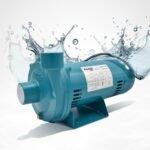Your home should be your sanctuary—a place where you can breathe easy and relax. But what happens when the air inside feels stale, your energy bills keep climbing, and that lingering smell from last night’s dinner just won’t disappear? These frustrating issues might be telling you something important about your home’s ventilation.
Most of us don’t think much about indoor air quality until something goes wrong. We open windows, run exhaust fans, and wonder why our heating bills are through the roof. But there’s a smarter solution that’s gaining popularity among homeowners who want fresh air without the energy penalty: MVHR units.
An MVHR (Mechanical Ventilation with Heat Recovery) unit could be the game-changer your home needs. These systems provide continuous fresh air while recovering up to 95% of the heat that would normally be lost through traditional ventilation methods. If you’re experiencing any of these five telltale signs, it might be time to consider making the switch.
Sign 1: Your Energy Bills Keep Rising Despite Your Best Efforts
You’ve sealed gaps around windows, added extra insulation, and maybe even upgraded your heating system. Yet your energy bills continue to climb each month. Sound familiar?
This frustrating pattern often points to a ventilation problem. Traditional methods of getting fresh air—opening windows, running exhaust fans, or using basic ventilation systems—force your heating and cooling systems to work overtime.
Here’s what’s happening: when you open a window during winter, you’re essentially throwing heated air outside and forcing your heating system to replace it. The same principle applies to air conditioning in summer. Your HVAC system battles against constant air loss, burning through energy and money.
The hidden costs of poor ventilation:
- Heating systems running longer to compensate for air loss
- Air conditioning working harder to maintain cool temperatures
- Increased wear and tear on HVAC equipment
- Constant temperature fluctuations that trigger system cycling
An MVHR unit changes this equation completely. By recovering heat from outgoing air and using it to warm incoming fresh air, these systems provide ventilation without the energy penalty. Many homeowners see heating cost reductions of 20-30% after installation.
The math is compelling. While opening a window might seem free, the energy cost of replacing that conditioned air adds up quickly. An MVHR unit provides fresh air while keeping your hard-earned money in your pocket.
Sign 2: Persistent Moisture and Condensation Issues
Does your bathroom mirror fog up constantly? Do you notice water droplets on windows during colder months? These aren’t just minor annoyances—they’re signs that your home has a moisture problem that could lead to bigger issues.
Excess humidity creates the perfect breeding ground for mold and mildew. That musty smell that’s so hard to eliminate? It’s often the result of moisture that your current ventilation system simply can’t handle effectively.
Common moisture problems include:
- Condensation on windows and mirrors
- Mold growth in bathrooms and basements
- Musty odors that won’t go away
- Peeling paint or wallpaper
- Warped wooden fixtures or furniture
Traditional solutions often involve energy-hungry dehumidifiers or constantly running exhaust fans. These approaches treat symptoms rather than addressing the root cause: inadequate air exchange.
An MVHR unit provides consistent air exchange that removes excess moisture before it becomes a problem. The system extracts humid air from kitchens, bathrooms, and other problem areas while bringing in fresh, filtered outdoor air. This balanced approach maintains optimal humidity levels without the energy waste of traditional methods.
The result? No more foggy mirrors, no more musty smells, and no more worrying about mold growth. Your home stays comfortable and healthy year-round.
Sign 3: Indoor Air Quality That Makes You Feel Uncomfortable
Indoor air can be 2-5 times more polluted than outdoor air. This might sound surprising, but consider everything that contributes to indoor air pollution: cooking fumes, cleaning products, pet dander, dust, and even off-gassing from furniture and building materials.
Without proper ventilation, these pollutants accumulate over time. You might notice that your home feels stuffy, especially after cooking or cleaning. Family members with allergies or respiratory sensitivities may experience more frequent symptoms.
Signs of poor indoor air quality:
- Persistent cooking odors that linger for hours
- Stuffy feeling, especially in bedrooms or closed spaces
- Increased allergy symptoms indoors
- Dust accumulation despite regular cleaning
- Chemical smells from cleaning products or new furniture
Many homeowners try to solve these issues by opening windows or using standalone air purifiers. While these help temporarily, they don’t address the fundamental problem: insufficient air exchange.
An MVHR unit provides continuous filtered air that removes pollutants while bringing in fresh outdoor air. High-quality filters can remove 99.97% of particles, including allergens, dust, and other contaminants. This means cleaner air for your family and less reliance on temporary solutions.
The constant air exchange also prevents pollutant buildup, so your home stays fresher naturally. No more masking odors with air fresheners or running multiple air purifiers throughout the house.
Sign 4: Temperature Inconsistencies Throughout Your Home
Do some rooms feel stuffy while others are too cold? Are you constantly adjusting the thermostat to find a comfortable temperature? These temperature inconsistencies often indicate that your home’s air isn’t circulating properly.
Poor ventilation creates pockets of stagnant air that can be significantly warmer or cooler than the rest of your home. This forces your heating and cooling systems to work harder while leaving you uncomfortable.
Common temperature problems:
- Bedrooms that feel stuffy and warm
- Bathrooms that stay humid and uncomfortable
- Kitchen areas that become too hot during cooking
- Cold spots near windows or exterior walls
- Constantly adjusting thermostats without achieving comfort
Traditional ventilation methods often make these problems worse. Opening windows creates drafts and temperature swings. Basic exhaust fans remove air without replacement, creating pressure imbalances that affect comfort.
An MVHR unit provides balanced ventilation that maintains consistent temperatures throughout your home. The system exchanges air without the dramatic temperature changes associated with opening windows or running exhaust fans.
The heat recovery feature is particularly valuable here. Instead of losing conditioned air, the system captures that thermal energy and uses it to condition incoming fresh air. This creates a more stable indoor environment that’s easier for your HVAC system to maintain.
Sign 5: Ongoing Battles with Allergens and Dust
If you’re constantly dusting furniture, dealing with allergic reactions indoors, or finding that air purifiers can’t keep up with the demand, your home might be telling you it needs better ventilation.
Allergens like pollen, pet dander, and dust mites thrive in poorly ventilated spaces. Without adequate air exchange, these particles accumulate over time, making life miserable for sensitive family members.
Allergy and dust indicators:
- Frequent sneezing or respiratory symptoms indoors
- Dust accumulation shortly after cleaning
- Seasonal allergies that seem worse at home
- Pet dander that won’t settle despite regular cleaning
- Air purifiers that need frequent filter changes
Many homeowners fight this battle with multiple air purifiers, frequent cleaning, and allergy medications. While these help manage symptoms, they don’t address the source of the problem: insufficient air exchange and filtration.
An MVHR unit provides continuous filtration that removes allergens before they can accumulate. The system brings in fresh outdoor air while filtering out pollen, dust, and other particles. This creates a healthier environment for everyone, especially family members with allergies or asthma.
The constant air circulation also prevents dust from settling on surfaces. Many homeowners find they need to dust less frequently after installing an MVHR system, saving time and improving air quality simultaneously.
Taking Action: Your Next Steps
Recognizing these signs is the first step toward creating a healthier, more efficient home. If you’re experiencing one or more of these issues, an MVHR unit could provide the solution you’ve been searching for.
The benefits extend beyond addressing immediate problems. These systems improve daily life in ways that reinforce their value: better sleep, reduced allergy symptoms, lower energy bills, and improved home comfort.
When considering an MVHR unit, look for systems with heat recovery rates above 90%, energy-efficient operation, and high-quality filtration. Professional installation ensures optimal performance and integration with your home’s existing systems.
Your home should work for you, not against you. If you’re tired of battling poor air quality, high energy bills, and uncomfortable living conditions, it might be time to explore how an MVHR unit could transform your indoor environment.
The investment in better ventilation pays dividends in comfort, health, and energy savings. Your future self—and your energy bills—will thank you for making the change.
For More Information Visit timelymagazine








